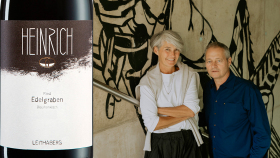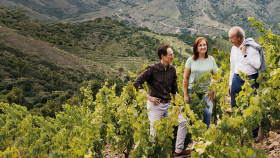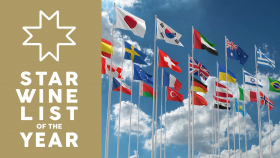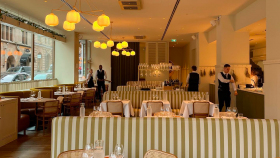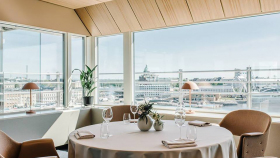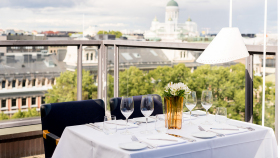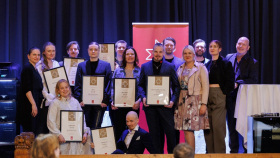Arvid Rosengren's 5 tips - how to be a better blind taster

You want to be better at blind tasting wine? Star Wine List partner Arvid Rosengren, ASI Best Sommelier of the World in 2016, gives you his five best tips.
Blind tasting is an almost mythical skill. When I meet people who are not in the wine business they love telling me of this coworker or family member who can nail down the soil type, exposure to the sun, distance to a body of water and so forth just from putting his (it’s always a he) nose in a glass. It’s an obvious parlor trick, to anyone who knows what they’re doing.
Before we get in to the tips, I should say that blind tasting does have some value. For example, let’s say you’re a sommelier looking for a new Pinot Noir to put on your wine list for $100, then it may be wise to eliminate the factors of prejudice, old loyalties, pretty labels and all that, and just taste a lineup of bottles that fit the bill, to decide which is the best fit.
Stick to the benchmarks, the wines that the winemakers around the world look up to
It can also be a valuable educational tool: Do I understand what a particular wine is expressing and why? Do I really know what whole cluster fermentation imparts on a wine if I can’t pick a wine out of a lineup of its peers?
And finally, it’s sometimes good to check yourself: Do I really like this wine? If you don’t like it blind, you probably shouldn’t like it when you see the label either.
We in the wine world are not without blame from boosting the value of blind tasting as a parlor game in this context out of proportion. An unfortunate side effect of it is that most budding wine drinkers are intimidated and generally think they’re not capable, as if the ability to blind taste is a trait you’re born with, or not.
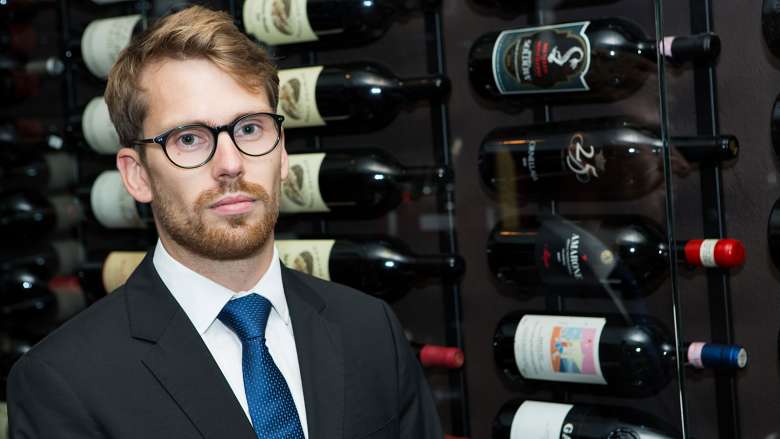
We know that there are those with photographic memory, and sure, there are probably a small subset of people with the same capability for aromas and tastes. However, for the vast majority of us, I believe the playing field is in fact pretty even, and that proficiency in blind tasting, as with most things, can be achieved with hard work.
What is blind wine tasting?
Blind wine tasting is simply that you taste a wine or several wines without knowing what wines are in the glasses. Only the organiser knows what wines there are. It is often used in wine and sommelier competitions.
So, how does one become a better blind taster? Here are five tips for you:
1. Stick to the basics
For non-professionals, the wheels usually come off right here, for the reasons I mentioned above (blind tasting is something you’re good at, or not). It becomes a game, about besting your friends, so the key is bringing wine that’s as weird as possible. No one is ever going to be able to nail an Australian Tempranillo (unless they’ve recently tasted the exact same wine) – and if that’s the type of wine you’re bringing to a blind tasting, you will soon find yourself uninvited. Instead, stick to the benchmarks, the wines that winemakers around the world look up to. These are the wines you should learn to identify – the Chablis’, Mosel Rieslings, Chiantis, Riojas etcetera of the world. This is not about Eurocentric snobbery, there are plenty of classic and unique styles in the New World as well (Napa Cab, Mendoza Malbec, Barossa Shiraz all fit the bill, as do many more).
2. Be disciplined (until you switch discipline)
Stick to a methodology. At least for a while. Now, I don’t necessarily think that going through The Grid and differentiating between medium and medium minus acidity is actually going to make you a better taster. But it’s going to force you to not miss anything. Once that is so ingrained that you never have to think about it you can branch out and the mind can be freer in its deductions. When I felt that I had reached a plateau and couldn’t progress further, I changed my method for a while and drew wines as shapes on paper, noting what stuck out in a glass instead of going through all the characteristics. That got me over the hump.
3. Taste first, guess second
There are wines that are so unique and immediately recognizable if you’ve had them before. That’s where most of the mythology of blind tasting stems from. But most of the times you’ll be in the dark, and instead of panicking and guessing halfway through, assess the wine in its entirety and then make an educated guess. Are the tannins soft? Ok, so then it’s probably not Nebbiolo, even if that’s where your mind went when you first smelled it.
Stick to the benchmarks, the wines that the winemakers around the world look up to
4. Tasting and knowledge go hand in hand
Remember that annoying family member or friend in the introduction who would regale you with tales of sundrenched terraces overlooking a river – as if he was reading tealeaves instead of wine? This is where he actually got something right! He knew enough to be able to identify the wine and then tell you all he knew about where it came from and how it was made. He just took the long, seemingly impressive route there. You cannot make an educated guess without coupling it with theoretical knowledge. How does a good taster nail the vintage, for example? It’s not a shot in the dark: First, you judge the age and maturity of the wine, which usually can be narrowed down to a range, and within that range you now need to pull out your mental rolodex of vintages and how they express themselves.
5. Immerse yourself
This is where the 10.000-hour rule applies: The more you do it, the better you become. The inverse is true too. When I was practicing for competitions I was blind tasting dozens of wines every day. Now, that my approach is much more relaxed, my skills have definitely slipped.
There’s plenty more to be said about blind tasting, but this is a good introduction. Find a good tasting group, who can adhere to not one-upping each other with weird wines, who care less about ego and being right and more about learning, having fun and sharing some good bottles.
The Grid
The wine tasting grid is essentially a guide for understanding the wine in your glass, and to reveal the identity and quality of the wine.
The grid breaks down the wine into several different parts: The visual characteristics (clarity, brightness, colour, etc), the aromas (intensity, fruit, oak, etc), and the taste and structure (tannins, sweetness, acidity, length, balance, etc).
Do like the Pros - search 2500+ wine lists




